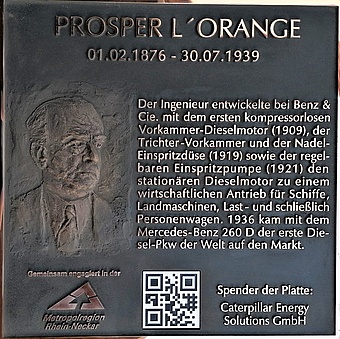Adjustable injection pump 1909
Prosper L'Orange (1876-1939)
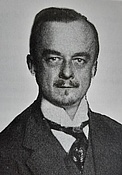
Prosper L'Orange was born on February 1, 1876, in Beirut, in what was then the Ottoman Empire. His father, Dr. Rudolf Heinrich L'Orange, comes from a French Huguenot family and is the chief physician at the St. John's Hospital in Beirut. When Prosper is 12 years old, his parents send him to relatives in Königsberg. He attended the Realgymnasium there and graduated from high school. He became interested in engines at an early age. In October 1896, he began studying mechanical engineering at the Technical University of Berlin-Charlottenburg and graduated with honors in the summer of 1900. In the same year, he took up a post as assistant at the thermotechnical laboratory of the TH Berlin, where he researched refrigerating machines and married Hedwig Eisendick. After completing his one-year military service in Königsberg, he took up his first post in 1902 in Danzig, where his eldest son Rudolf was born the same year. In 1903, L'Orange transferred to the Princely Stolberg Iron and Steel Office in Ilsenburg. Here, in the Harz Mountains, his second eldest son Harro was born. & nbsp;
The very next year, L'Orange began working as a test engineer for large gas engines at Gasmotorenfabrik Deutz AG in Cologne and took over as head of the test department two years later. Here, the focus is on Rudolf Diesel's compression ignition engine, as the protection of his patents expires in 1907/08 .
In the gasoline engine, the processed air-fuel mixture is drawn in and then compressed. In the diesel engine, on the other hand, the fuel is conveyed by a low-pressure pump into an atomizer and injected at high pressure as a fine mist into the air in the combustion chamber, which is highly compressed by a compressor. As a result of the high temperature created during compression, the fuel ignites itself and no longer needs to be ignited by special spark plugs as in the gasoline engine.
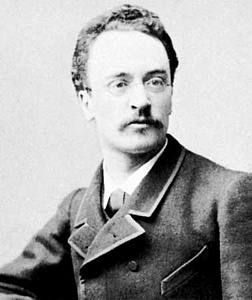
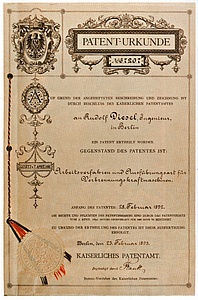
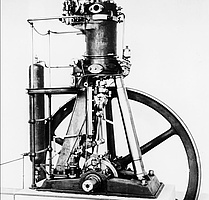
Although the first diesel engines were already highly efficient, they were large and heavy due to the complex technology involved. Nevertheless, the diesel engine establishes itself alongside the gasoline engine as a second form of internal combustion engine, albeit initially only as a stationary engine that drives other machines in factories or workshops.
In the experimental department, L'Orange worked on a design that would eliminate the need for a compressor and thus make the engine smaller. It connects the engine's cylinder through valves to a spherical chamber located opposite, in which a small amount of fuel ignites after it is injected, causing the remaining fuel to swirl and disperse into the compressed air in the cylinder.
In 1908, Deutz AG applied for the so-called after-chamber patent(DRP 238 832), but did not pursue this approach any further. With the design of a split combustion chamber, however, L'Orange succeeded in taking the first step toward the compressorless diesel engine.
In October 1908, the chief engineer Prosper L'Orange moved to Mannheim as head of engine testing to Benz & Cie, the company founded by Carl Benz in 1871 as the "Mechanische Werkstätte". After Carl Benz's retirement in 1903 and the relocation of automobile production to the new factory in Mannheim-Luzenberg five years later, the department for the construction of stationary engines left behind in the old Benz factory in Waldhofstrasse with the old machines struggles with considerable problems.
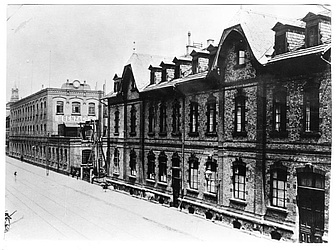
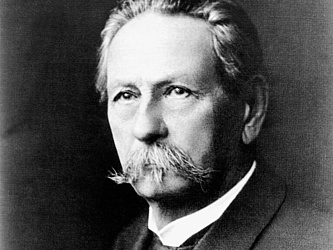
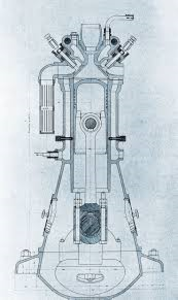
Stationary engine construction is no longer profitable or competitive. It was hoped that the young graduate engineer could give stationary engines a new lease of life. L'Orange not only received sophisticated equipment for his test laboratory, but also extensive powers and the right to his inventions.
First of all, he has his department equipped with new machines and quickly designs upright single-cylinder engines for liquid and gaseous fuels (P I to P IV), which immediately become a great sales success.
Along the way, he builds a test engine with various cylinder heads to improve his after-chamber process. He pursues the goal of controlling fuel atomization and thus the fuel supply more precisely and uniformly than was possible with the explosive ignition of the fuel in the after-chamber. It arranges a hemispherical chamber between the injector and the cylinder. In this, after injection, a small portion of the diesel oil burns through contact with the hot spherical wall, creating an overpressure that drives the remaining air-diesel mixture into the cylinder in a finely atomized form. At high temperatures, more uniform combustion can take place, resulting in smoother operation, higher engine speeds and more power. When Rudolf Diesel visited Benz & Cie in Waldhofstrasse in 1909 to offer a license for vehicle engines, he admired L'Orange's experimental machine.
On March 14, 1909, Benz & Cie. applied for a patent for Prosper L'Orange's pre-chamber principle (DRP No. 230 517). In 1910, Prosper L'Orange, who had in the meantime moved with his family of five to Stamitzstrasse in Mannheim, close to the plant, was appointed authorized signatory (Prokurist) and in 1912 was appointed to the Board of Management.
In 1913, he moved with his family into a house at Nadlerstrasse in Feudenheim. In the summer of 1914, he was finally able to move into his own house. When he finally wanted to continue his experiments in the summer of 1914, the start of the First World War prevented this. The reservist Prosper L'Orange was drafted in August 1914, but was already ordered back in the fall and tasked with developing diesel engines for submarines.
He was unable to resume his experiments to improve the pre-chamber diesel engine until after the end of the war. Up to then, the combustion gases washed around the igniter from all sides, resulting in rapid combustion and its destruction. The nozzles are repeatedly clogged by oil coking and have to be replaced. This causes costs and engine failure. Studies now developed abroad pre-chamber diesel and more and more new experiments let him find the cause of coking. This occurs when the material with which the fuel is in contact is too hot. But it must not be too cold either, otherwise the fuel will condense. After many unsatisfactory attempts, he is finally able to develop a funnel-shaped ignition insert, which is inserted into the water-cooled cylinder head in such a way that the combustion gases only reach its inner surface. Now the danger of coking is significantly reduced and reliable ignition and optimum combustion are achieved.
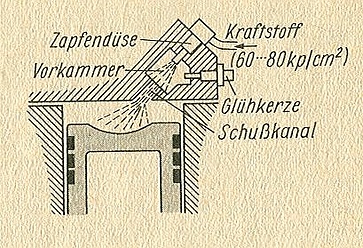
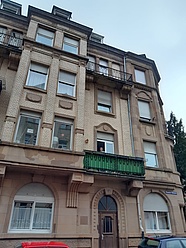
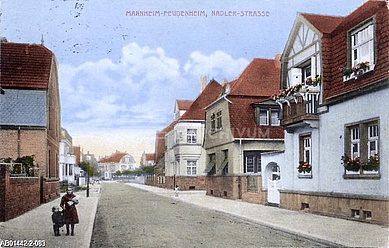
On March 18, 1919, the funnel patent was registered and granted five years later (patent DRP No. 397 142). In 1919, Prosper L'Orange scored another success: a significantly improved needle injection nozzle.
Finally, in 1921, L'Orange succeeded in designing the controllable injection pump, which injects the fuel specifically into the cylinder. This pump was sealed for the first time without a stuffing box, simply by matching the piston and liner with millimeter precision. A mechanical masterstroke at the time. With this injection pump, the flow rate can now be infinitely varied and the engine's power output precisely controlled. L'Orange has thus achieved its goal: the design of a high-speed compressorless diesel engine that can also power road vehicles reliably, robustly and economically.
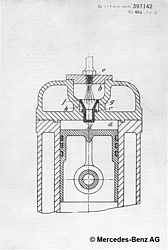
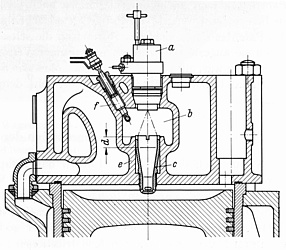
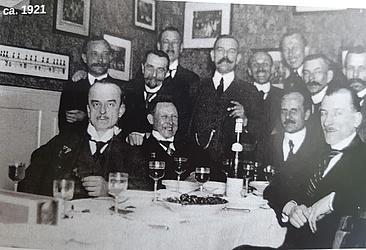
On January 1, 1922, Benz & Cie. sells its "Stationary Engine Construction" department to a Berlin-based financial group. The spun-off company is now called "Motorenwerke Mannheim AG, formerly Benz, stationary engine construction department" and is headed by Prosper L'Orange. MWM now builds the larger diesel engines and Benz & Cie. the small vehicle engines.
After a test series, L'Orange's new pre-chamber diesel was installed in 1922 as a two-cylinder, four-stroke engine with an output of 25 hp in a three-wheeled farm tractor. The Mannheim-based company developed this engine together with the Munich-based tractor manufacturer Sendling. At the agricultural exhibition in Königsberg, the Benz-Sendling S 6 tractor immediately found buyers and went into series production in March 1923.
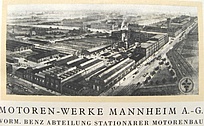

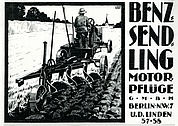
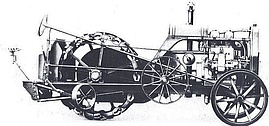
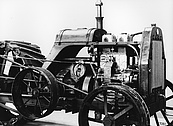
In April 1923, the first series-produced diesel engine for commercial vehicles is launched with a small series of four-cylinder prechamber type OB 2 diesel engines. On September 10, 1923, the world's first diesel truck , the Benz 5 K 3 truck with a four-cylinder prechamber type OB 2 engine developing 45 hp, makes its maiden voyage in hilly Gaggenau. Compared to an identical gasoline engine, the diesel achieves sensational fuel savings. In times of great fuel shortages, its high cost-effectiveness makes it successful. The crude oil required for combustion is cheaper than gasoline and can also be distilled from lignite tar. (1913 Friedrich Bergius, coal liquefaction) Since the diesel engine does not require ignition or a carburetor, it is also much easier and cheaper to maintain. The Benz 5 K 3 was produced for 10 years. It was also available with the 4-cylinder OB 2 diesel engine as a 5 t flatbed truck.
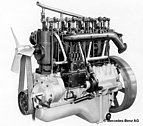
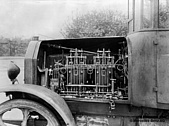
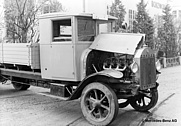
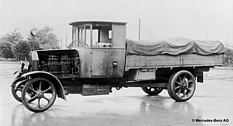
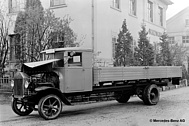
In 1924, MWM presented its road tractor, affectionately known as the "motor horse" , with an 18 hp diesel engine. During a demonstration run, it pulls 5 tons of trailer load up the Königstuhl in Heidelberg.
As general manager of MWM, however, L'Orange no longer had time for his research into perfecting fuel injection technology. When Daimler and Benz merged and Knorr-Bremse AG Munich was about to take over the majority of shares in MWM, L'Orange left the engine works at the end of 1925 and studied physics for two semesters as a guest student at the University of Heidelberg.
In 1926, he applied for patents for a pump suitable for many engine types and ventured into self-employment. With a Mannheim banker as a partner, he founded "REF Apparatebau GmbH" in Stuttgart-Feuerbach in 1927 and very successfully manufactured injection pumps and nozzles for compressorless diesel engines, later also DC injection nozzles for aircraft engines. The products were also in great demand abroad.
However, with the world economic crisis, the company got into such serious difficulties that L'Orange was forced to sell his company and its patents to Robert Bosch AG in 1932. From then on, L'Orange worked from his private office as a consultant, for example for Klöckner-Humboldt-Deutz. The test machine for his last project, the pumpless diesel engine, also came from Deutz.
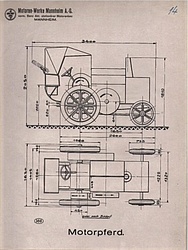
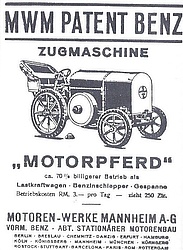
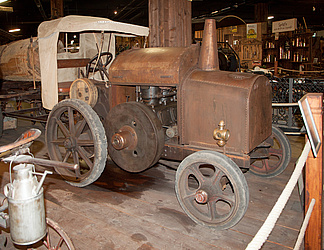
His sons Rudolf and Harro founded "Gebrüder L'Orange Motorzubehör GmbH" in 1933 and specialized in the development and production of injection systems. L'Orange GmbH remains in family ownership until 1978 and is the world market leader in injection technology for large 4-stroke engines. Today it is called Woodward L'Orange.
After the merger of Daimler-Motorengesellschaft and Benz & Cie. , L'Orange's pre-chamber engine is preferred because it is lighter and cheaper than Daimler's diesel engine with compressed air injection. L'Orange's patents also formed the basis for the world's first series-produced diesel passenger car, the Mercedes-Benz Type 260 D (W 138). Its presentation at the Berlin Motor Show in February 1936 was a sensation. Its exceptional economy and reliability quickly made the Mercedes-Benz 260 D a successful model. It was particularly popular as a cab. It consumed only 9.5 liters per 100 kilometers and reached a top speed of 90 km/h. It could be driven up to a distance of up to 100 kilometers on just one tank. It travels up to 500 km on just one tank of gas, which is an advantage given the few gas stations at the time.
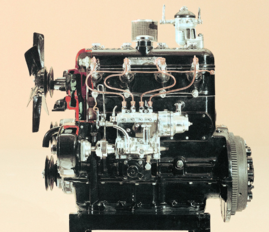
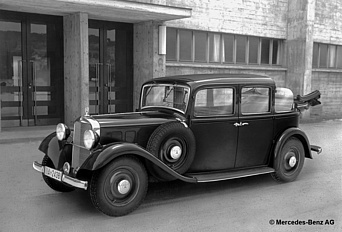
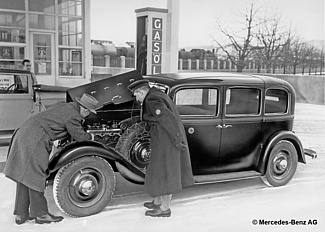
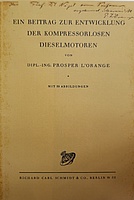
L'Orange summarized his inventions in his only longer printed work. It appeared in 1934 and was modestly titled not "My Contribution" but "A Contribution to the Development of Compressorless Diesel Engines.
The Senate of the TH Karlsruhe, convinced of L'Orange's scientific achievements, wanted to award him an honorary doctorate, but initially had trouble convincing the party authorities to honor the non-party member with the French name. On February 28, 1939, L'Orange was finally awarded an honorary doctorate by the TH Karlsruhe, today the Karlsruhe Institute of Technology (KIT), for his life's work.
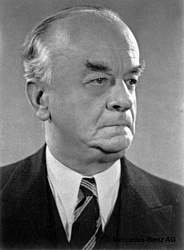
Dr.-Ing. E.h. Prosper L'Orange, the pioneer of the modern diesel engine, dies unexpectedly in Stuttgart on July 30, 1939. A full-page obituary appeared in the Motortechnische Zeitschrift MTZ, which he had founded shortly before and which is still published today. His gravesite in Stuttgart's Waldfriedhof cemetery is adorned with a stone bearing his portrait.
Prosper L'Orange dedicated himself to realizing Rudolf Diesel's dream of a high-speed, compact diesel engine as a means of powering automobiles, and he was privileged to experience the triumphant success of his inventions. Rudolf Diesel did not live to see the success of his engine. Facing economic ruin, he disappeared from the mail steamer Dresden in 1913 on the crossing from Holland to England. But he was convinced that the diesel engine would one day also power cars.
Until the 1990s, Prosper L'Orange's prechamber principle formed the basis for the further development of economical diesel engines. Prosper L'Orange also had the idea for common rail injection, which was introduced in 1997, as early as 1937. Unsurprisingly, Woodward- L'Orange is one of the most important suppliers of common-rail systems.
It is a pity that the exhaust gas manipulations six years ago brought the economical and durable diesel engine into disrepute. Politicians even want the internal combustion engine to soon be a thing of the past. Isn't that throwing out the baby with the bathwater? Is the much-vaunted electric engine really that much more environmentally friendly? There are now new diesel engines that emit up to 80 percent less nitrogen oxide than six years ago. But that's another story.


